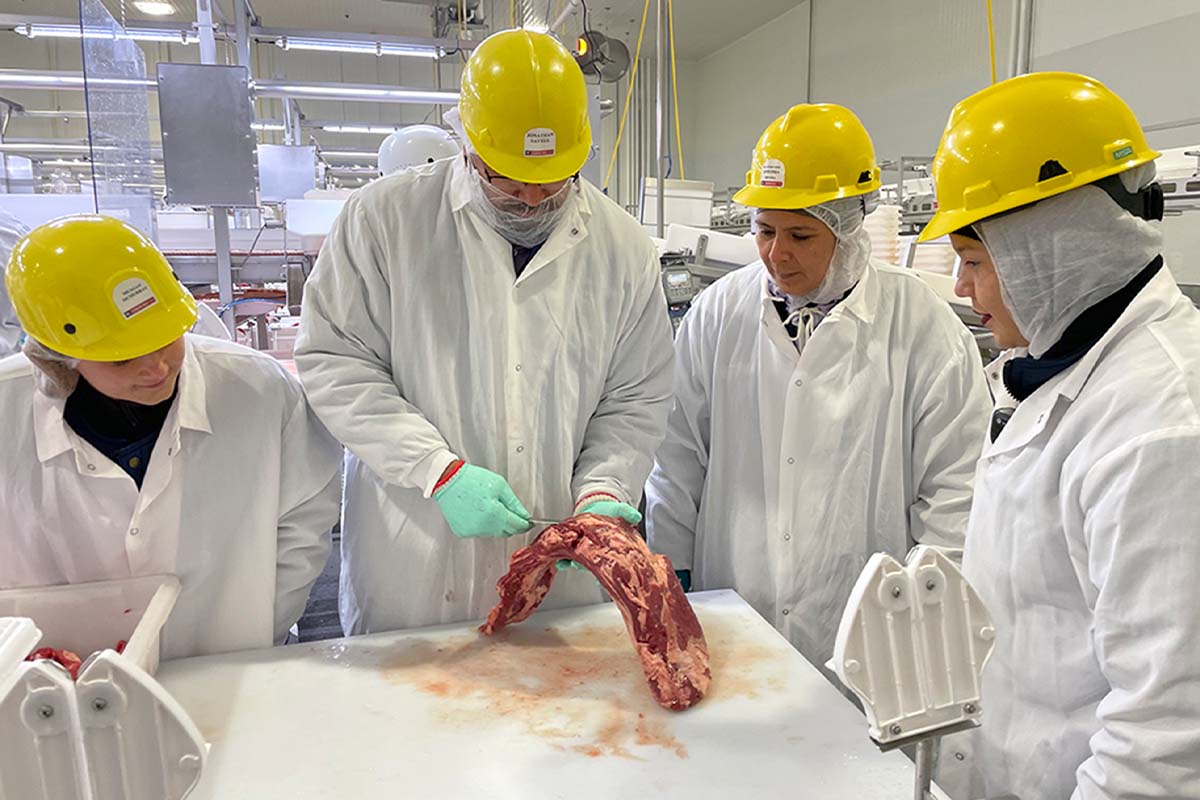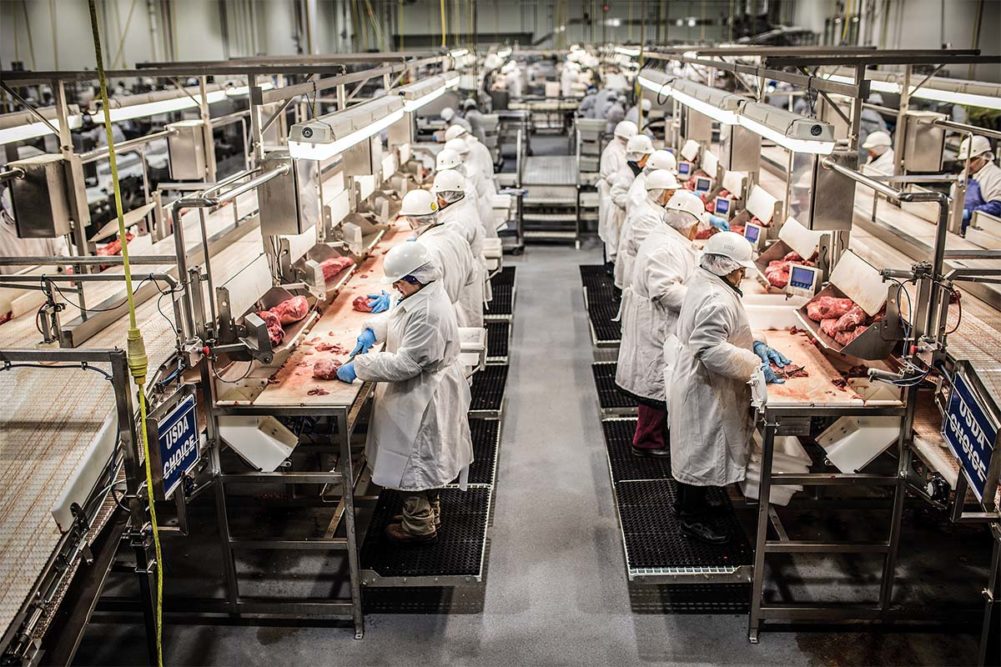When the food-consuming public thinks about food safety, their first thought likely goes to the role of government inspectors and regulators who play a role in ensuring their food is safe to eat.
This is even more likely when they think about the safety of meat and poultry. Consumers probably don’t think much about or even realize the role universities play in researching food safety – or to the meat industry itself. The fact is the meat and poultry industries play major parts in making sure food products are safe for their customers and consumers.
A good example of an industry professional’s involvement in food safety is Jonathan Savell, senior director of food safety, quality and product development at Standard Meat Co., a protein packaging and portioning company with headquarters in Fort Worth, Texas. Founded in 1935, the business serves a variety of foodservice needs from its four manufacturing facilities in the Dallas-Fort Worth area, where beef, pork and poultry are further processed into such products as ready-to-cook, ready-to-eat steaks, chops, chicken breasts, sausage, and ground items. The company’s customers include foodservice, retail and home meal kit customers.
Food safety in the family
Jonathan is the son of Dr. Jeff Savell, vice chancellor and dean of Animal and Life Sciences at Texas A&M University, and university distinguished professor in meat science as well as a contributing editor to MEAT+POULTRY and co-author of “Meat Perspectives” with colleague Kerri Gehring.
“My dad has been in the meat science section at Texas A&M since before I was born,” Jonathan said. “I really grew up around the industry. I would go to the Rosenthal Meat Science Center on the campus, I’d be around his graduate students and the judging contents. Our summer vacations would revolve around the Reciprocal Meat Conference each year,” he said with a laugh.
Jonathan is a graduate of Texas A&M with a Bachelor of Science degree in Agricultural Leadership and Development, and a Certificate in Meat Science.
At Standard Meat, Savell leads the company’s Food Safety Council.
“Our Food Safety Council is an outside group of industry experts who we use to stay informed of the most up-to-date scientific and regulatory changes affecting the industry, including our food safety,” Savell explained. “Right now, we have three outside members of the council, including representatives from academia and industry veterans,” adding that the Council meets a few times a year to review the company’s food safety programs.
Savell is tasked with convening the Food Safety Council at Standard Meat, and meeting directly with the council. The council has existed at the company for three years and helps oversee food safety efforts there.
“The council reviews our HACCP plans, our prerequisite programs and is an incredible sounding board for new and innovative ideas,” he said. “We want to make sure that when we are coming up with a new process or utilizing new technology that we aren’t missing something.
“We also review our food safety data with them on a regular basis. It’s good to get a fresh set of eyes on our food safety programs to make sure that we don’t have any blind spots,” he said. “It is an extra step of advice that has proven very helpful for us.”
The council also impresses and reassures the company’s customers by demonstrating its commitment to food safety.
 Jonathon Savell (pictured with Meagan McMurry, Antonia Rivera and Yesenia Martinez) and his R&D team keep tabs on meat and poultry products as they are handled on the processing line. (Source: Standard Meat Co.)
Jonathon Savell (pictured with Meagan McMurry, Antonia Rivera and Yesenia Martinez) and his R&D team keep tabs on meat and poultry products as they are handled on the processing line. (Source: Standard Meat Co.)
Primary function
The Food Safety Council plays a key role in controlling Salmonella and other foodborne pathogens at Standard Meat.
“The council helps ensure that we are addressing all pathogens of concern in all of our food products,” Savell said. “Salmonella is definitely a hot-button topic that is on the minds of everyone in the meat and poultry industry. As an industry, we should always strive to make improvements in food safety and as a company, we will always lead with food safety.”
Savell doesn’t think the Food Safety Council or something like it is necessarily unique to Standard Meat Co. At the same time, he can’t say how common it is throughout the industry’s processing companies.
“This is an extra step that we as a company have decided to invest in,” he said, “to do everything we can to make the safest product possible.”
Like many people in the meat and poultry industry, Savell doesn’t think food safety should be carried out as part of the competition between businesses in the meat and poultry industry.
“Food safety should not be a competitive advantage but having bad food safety practices will cost you business. Safety is the requirement. We add innovation, research and development and culinary expertise to make our products and customers shine.”
For Savell, food safety plays a major part in the operations of the meat and poultry industry. He and Ranzell “Nick” Nickelson, a consultant at Standard Meat Co., were both named to the Salmonella Blue Ribbon Task Force, a group that is dealing with the challenges posed by Salmonella to the poultry and meat industry.
Salmonella has become more of a threat to the food industry in recent years, including poultry, meat and produce. The proof of this lies in the fact that there are 1.4 million cases of salmonellosis, the disease caused by the Salmonella pathogen, each year, according to the Atlanta-based Centers for Disease Control and Prevention (CDC). Estimates are that 95% of these cases are of foodborne origin.
More than 200 of every 1,000 Salmonella cases result in hospitalization, and eight of every 1,000 cases end in death. In fact, more than 30% of all food-related deaths are caused by Salmonella each year.
Government interventions
Now, government regulators including the US Department of Agriculture’s (USDA) Food Safety and Inspection Service (FSIS), and the Food and Drug Administration, recognize the dangers posed by Salmonella and are working on new steps to deal with the pathogen.
USDA-FSIS announced it is mobilizing stronger and more comprehensive steps against Salmonella. USDA is seeking stakeholder feedback on specific Salmonella control and measurement strategies, including pilot projects in poultry slaughter and processing establishments.
A major part of this will be encouraging preharvest controls (live birds on farms, growers) to reduce Salmonella contamination coming into the slaughterhouse, as well as in raw beef products. The data generated from these pilot programs will be used to determine if a different approach could result in a reduction in Salmonella illnesses.
Since not all Salmonella pathogens are equally likely to cause human illness, the emphasis will be on serotypes and virulence factors that pose the greatest human health risk. Also, the fight continues over whether Salmonella should be considered an adulterant.
Unlike E. coli O157:H7, which is considered an adulterant in meat, Salmonella is not. FSIS is working on new guidance to control Salmonella, and providing resources to address hazard controls, from preharvest through slaughter and further processing.


